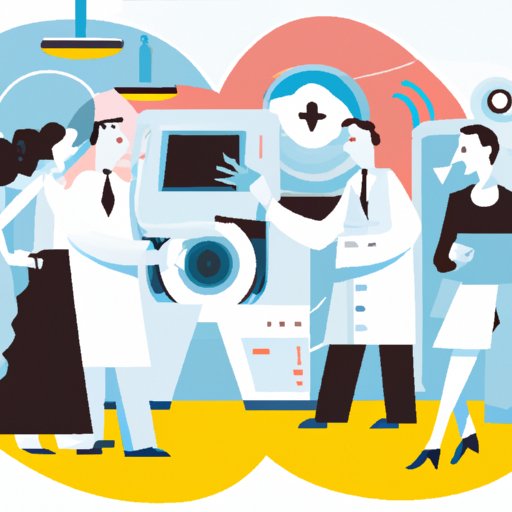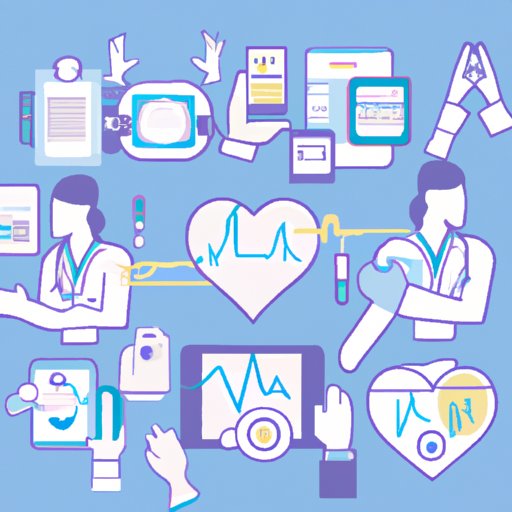Introduction
Technology has become an integral part of our daily lives, and the healthcare industry is no exception. Technology in healthcare refers to the use of technological tools and resources to improve patient care and safety, increase efficiency of healthcare delivery, reduce costs, and improve the overall quality of life for both patients and medical professionals. In this article, we will explore why technology in healthcare is so important and how it can benefit both individuals and healthcare providers.

Improved Diagnostic Accuracy and Access to Specialists
One of the primary benefits of using technology in healthcare is the ability to more accurately diagnose illnesses and diseases. This is achieved through the use of advanced imaging technologies such as MRI, CT scans, X-rays, and ultrasound. These technologies provide detailed images of the body’s internal structures, which can be used to detect conditions that may not be visible with the naked eye. Additionally, technology can also facilitate access to specialists who may not be available in a patient’s local area. Through telemedicine, patients can consult with specialists from around the world without having to travel.

Enhanced Patient Care and Safety
Another significant benefit of technology in healthcare is the ability to automate systems for monitoring patient health. Automated systems allow healthcare providers to track vital signs, such as heart rate and blood pressure, as well as other metrics, such as oxygen saturation levels. This information can then be used to make informed decisions about a patient’s treatment plan. Additionally, technology can also be used to leverage artificial intelligence (AI) and machine learning to assist healthcare providers in making diagnoses and prognoses. AI and machine learning can also help identify patterns in a patient’s data that may be indicative of certain conditions or diseases.
Increased Efficiency of Healthcare Delivery
Technology can also help streamline many of the manual tasks associated with healthcare delivery, such as data entry. By automating many of these processes, healthcare providers can save time, allowing them to focus on providing patient care rather than administrative tasks. Additionally, technology can be used to automate tasks such as scheduling appointments, ordering tests, and sending reminders to patients.

Reduced Costs of Medical Procedures
The use of technology can also help reduce the costs of medical procedures. By streamlining administrative tasks and improving supply chain management, healthcare providers can reduce costs associated with medical supplies and medications. Additionally, technology can also be used to reduce the cost of labor by automating many of the routine tasks that are required for healthcare delivery.
Improved Quality of Life for Patients
Technology can also improve the quality of life for patients. Improved access to healthcare services, such as telemedicine, can help patients receive timely and appropriate care regardless of their location. Additionally, online resources can be used to help patients manage their own health, such as tracking symptoms and medication adherence. Finally, technology can also help patients stay connected to their healthcare providers through secure messaging platforms and video conferencing.
Increased Access to Health Information
Finally, technology can also help increase access to health information. Personalized digital health records can be used to store and share patient information with healthcare providers. Additionally, technology can be used to remotely monitor a patient’s health status, allowing healthcare providers to quickly identify any changes in a patient’s condition and take appropriate action.

Improved Collaboration Between Providers and Patients
Technology can also improve collaboration between healthcare providers and patients. Secure messaging platforms can be used to communicate quickly and securely. Additionally, video conferencing can be used to provide virtual visits with healthcare providers, allowing patients to receive care without having to leave their homes.
Conclusion
In conclusion, technology in healthcare can provide many benefits, such as improved diagnostic accuracy and access to specialists, enhanced patient care and safety, increased efficiency of healthcare delivery, reduced costs, improved quality of life, increased access to health information, and improved collaboration between providers and patients. As technology continues to evolve, it is important to recognize the potential opportunities it presents and utilize available resources to maximize its benefits.
(Note: Is this article not meeting your expectations? Do you have knowledge or insights to share? Unlock new opportunities and expand your reach by joining our authors team. Click Registration to join us and share your expertise with our readers.)
